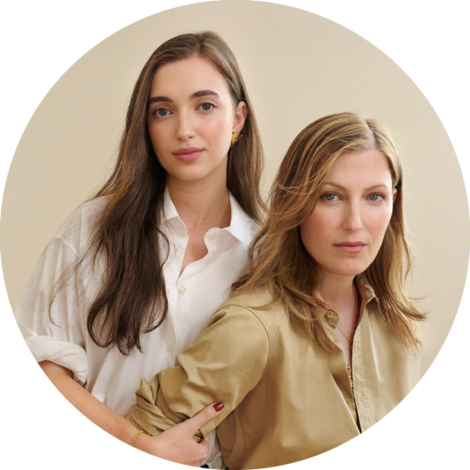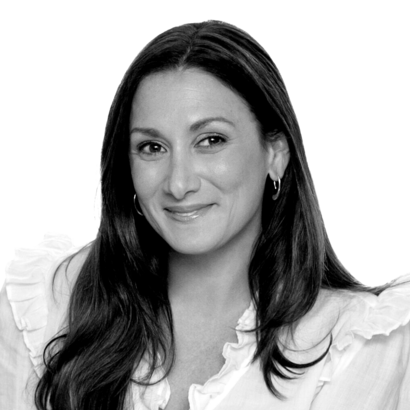In the eighth grade, in the middle of what I now know was only the first awkward phase of my life, I cultivated an after-school habit that helped me shake off the day: a navel orange and Newsweek.
I needed that shake-off because my car-pool ride home involved a pretty girl and her brother who forced me to take the middle seat so they could tell me I was ugly and practice spitting at each other over my head. Trapped between them—and in my own skin—I shrank and seethed.
Once I was safe at home, I’d grab that cold orange from the refrigerator and take it back to my parents’ bedroom, which was quiet and away from the fray of my younger siblings. There, I’d flop onto the perfectly made white bed and read Newsweek, full of grown-up news about AIDS or Anita Hill, and pretend I didn’t have to still be a kid.
This was a habit I picked right back up in my second awkward phase,
home the summer after my freshman year of college, and one of thoseNewsweek issues stands out, a special edition on “The Biology of Beauty.” Along with the number of calories in a gram of fat, my P.S.A.T. scores, and the taste of the Body Shop’s kiwi lip balm, it is locked forever in my brain. Page after page inside told the story and science of what and why and how humans attract one another: waist-to-hip ratio, big eyes, small chins, full lips, all very important. (I didn’t meet the criteria, I realized.) But the biggest, most essential thing researchers had discovered: symmetry was the key to true beauty. Symmetry, an adaptive addiction of the human brain.
A sidebar compared Denzel Washington to Lyle Lovett. Denzel’s face was all parallel lines: pupils, cheekbones, jaw, the bow of his lips landing exactly on the vertical midline. Unluckier Lyle had pokey ears that angled oddly, his face young but wrinkled, his mouth curved way up on one side in a sneer that was more clownish than mean.
I dared myself to go look in the mirror and assess the symmetry of the face that I had recently, finally, started to think of as pretty. I peered into my light-up makeup mirror, adjusting the settings: daytime, evening, dramatic.
Along with the number of calories in a gram of fat, my P.S.A.T. scores, and the taste of the Body Shop’s kiwi lip balm, it is locked forever in my brain.
No matter what the lighting, my eyes were never quite the same size, and my left eyelid drooped. Just a bit, but more than I’d realized. I was blind on that side, the result of a congenital cataract that had been removed and pupils that were not quite straightened by pediatric surgeries, in spite of my parents’ good care and commitment. I leaned into the mirror way up close, and my left eye wandered immediately outward, as if it wanted to do the grapevine dance right off of my face. Was this what the recipients of my dorm-room kisses had seen?
Years earlier, I had outgrown the Coke-bottle glasses and eye patch that I’d worn on one side all day, every day for almost a decade—even on swim team, one side of my goggles was blacked out with duct tape—but, I was realizing now, even with all of that in the past, even grown and prettier than I’d ever been, I’d never be symmetrical. I picked up the mirror and swiveled in the chair to see my profile. At least, thank goodness, we’d fixed my nose.
But my teenage nose job is a whole other story. Or maybe it’s not. Because there’s an asymmetry there too. Not just a physical one, but one of values. Between my compulsion to conform, and the rebellion of confidence: fix the nose; make peace with the lazy eye. Color my roots and get Botox, but be O.K. with a bit of a belly. And no matter what, always wear the bikini.
I wish that moment in the mirror had been my eureka one, that I had realized then that I was beautiful but also that I didn’t need to be. No such enlightenment. But I remember it—switching the light from cool to warm to dusk and seeing the same face no matter the filter.
My third awkward phase, new motherhood, with its boggle of days and nights, was the definition of asymmetrical. Breasts that filled up and emptied, one side and then the other, that screamed red and blotchy with infection but never failed to soothe a baby.
Now I am 45, with middle-schoolers of my own, and I find myself in a new, much more pleasant kind of adolescence. If I’m very lucky, I’m smack in the middle of my life, and I’m noticing so much beauty in the in-between. I’ve had to make peace, comically at times, with the fact that the best moments in working parenthood—those rich in either kind of ambition—are often acutely asymmetrical. I’ll run out of the shower soaking wet to write down the idea that only had space to appear as I was alone and naked, between pajamas and dressed. And every spring, a single red tulip appears amid the stiff waves of yellow ones on Park Avenue. I love that tulip!
My kids both have dyslexia, and there’s a common phrase about literacy and brain development that says that third grade is when children go from “learning to read” to “reading to learn.” I am right there, still in third grade. By learning to read the beauty in that mis-planted tulip, I’ve begun to see beauty in my own physical differences too. Life is a series of awkward stages, asymmetries of values and time. And embracing them has helped me throw my arms around that girl in the mirror.
Recently, I interviewed an author for her book launch. Getting the space ready beforehand, we lined up the chairs, and then pulled our two to the front, angled toward each other to face the audience.
“Which one would you like?” I asked her.
“Oh, actually, this one, thank you,” she said, motioning to the one at stage right. “How did you know I had a preference?”
I smiled. “Because everyone has a good side.”
Lauren Smith Brody is the author of The Fifth Trimester and the C.E.O. of a gender-equity firm for caregiving employees by that name, and a co-founder of the nonpartisan nonprofit the Chamber of Mothers





